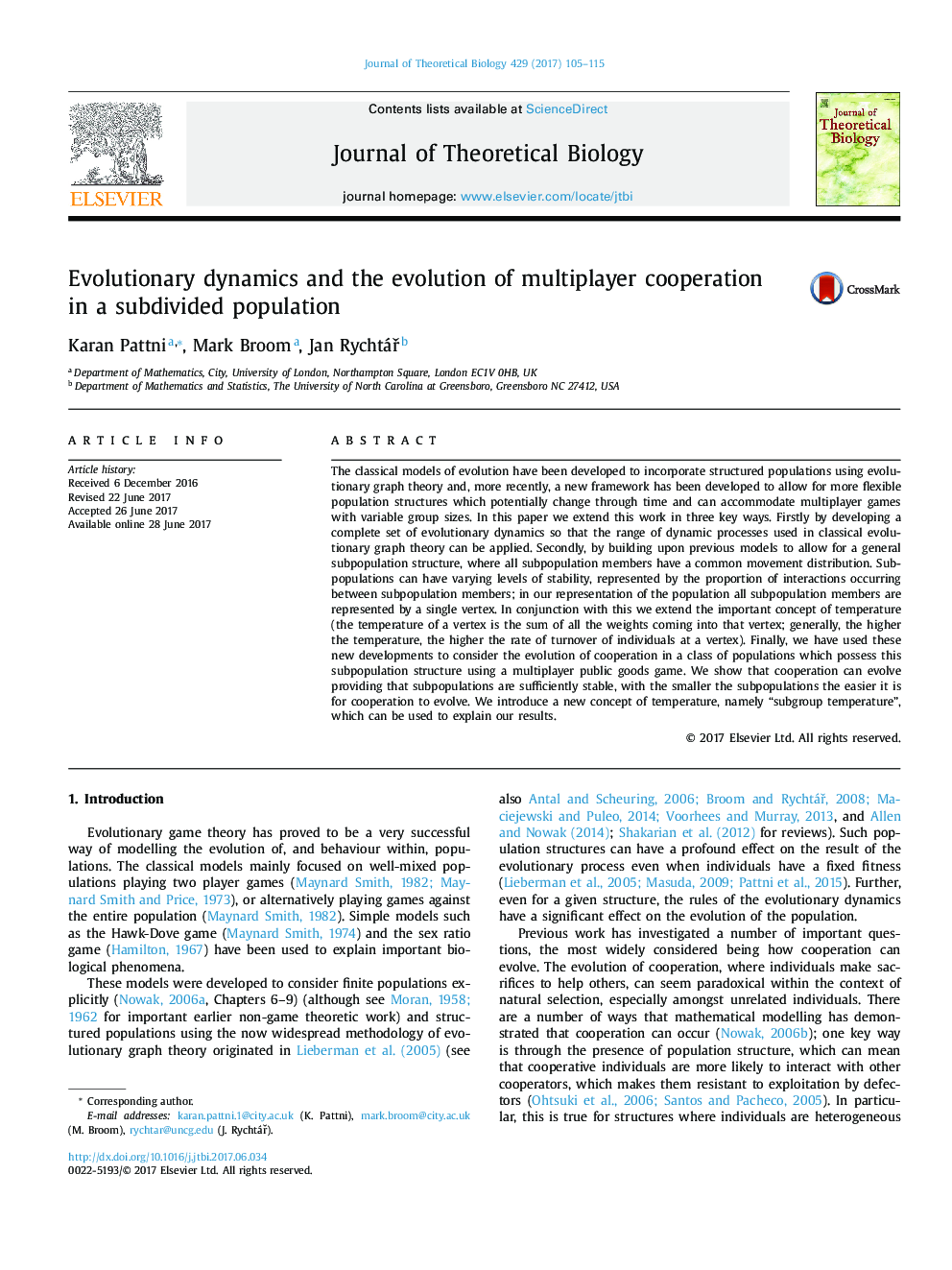| Article ID | Journal | Published Year | Pages | File Type |
|---|---|---|---|---|
| 5759969 | Journal of Theoretical Biology | 2017 | 11 Pages |
Abstract
The classical models of evolution have been developed to incorporate structured populations using evolutionary graph theory and, more recently, a new framework has been developed to allow for more flexible population structures which potentially change through time and can accommodate multiplayer games with variable group sizes. In this paper we extend this work in three key ways. Firstly by developing a complete set of evolutionary dynamics so that the range of dynamic processes used in classical evolutionary graph theory can be applied. Secondly, by building upon previous models to allow for a general subpopulation structure, where all subpopulation members have a common movement distribution. Subpopulations can have varying levels of stability, represented by the proportion of interactions occurring between subpopulation members; in our representation of the population all subpopulation members are represented by a single vertex. In conjunction with this we extend the important concept of temperature (the temperature of a vertex is the sum of all the weights coming into that vertex; generally, the higher the temperature, the higher the rate of turnover of individuals at a vertex). Finally, we have used these new developments to consider the evolution of cooperation in a class of populations which possess this subpopulation structure using a multiplayer public goods game. We show that cooperation can evolve providing that subpopulations are sufficiently stable, with the smaller the subpopulations the easier it is for cooperation to evolve. We introduce a new concept of temperature, namely “subgroup temperature”, which can be used to explain our results.
Related Topics
Life Sciences
Agricultural and Biological Sciences
Agricultural and Biological Sciences (General)
Authors
Karan Pattni, Mark Broom, Jan RychtáÅ,
